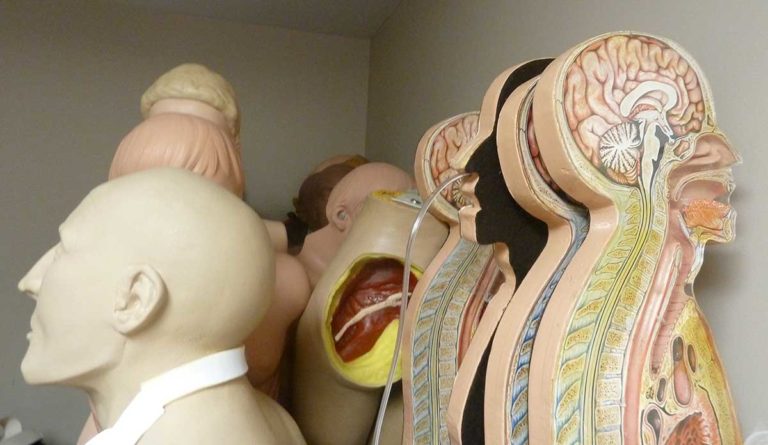Re-examining Medical School
To best serve the evolving needs of patients and communities, medical education should include public health and prevention in the curriculum, thereby addressing social accountability of medical schools.

Read Time: 5 minutes
Published:
In 1910 Abraham Flexner published his report “Medical Education in the United States and Canada,” now more affectionately called the Flexner Report. This report challenged U.S. medical schools to re-evaluate their curricula, to become more academic in training; with an end result of removing the “weaker and superfluous” institutions.
While the Flexner Report was appropriate for its time, ensuring that physicians were being trained in rigorous environments, utilizing the scientific method, participating in original research and learning by doing; we have come to a point in healthcare where we must look beyond what “traditional academic medicine” has been providing for the past century. If the current physicians-in-training are to best serve the evolving needs of their patients and communities, it is of the utmost importance that medical education includes public health and prevention in the curriculum, thereby addressing social accountability of medical schools.
In 1995 the World Health Organization (WHO) defined the social accountability of medical schools as “the obligation to direct their education, research and service activities towards addressing the priority health concerns of the community, region and/or nation that they have a mandate to serve. The priority health concerns are to be identified jointly by governments, health care organizations, health professionals and public.” Utilizing this model in medical education will in essence give medical schools a chief role in influencing healthcare systems both broadly and most directly affecting their communities in order to achieve and maintain quality, affordable, equitable healthcare.
In medical school, we are taught how to diagnose and treat any patient we may encounter. We learn about the human body from its most broad to most specific functions. There is not a nook or cranny left unstudied. And while we learn the science of the human body, we learn the pharmacology of the medicines we will prescribe in the future. Their names, their mechanisms of action, when to prescribe them and what side effects patients may experience when taking them. We learn about the ethics of medicine, how to interview patients, how to take a history, how to perform a physical examination. All of this happens in the first two years of training in the classroom, before we are even allowed to step into a clinical setting and practice what we have been studying.
Having training in public health would not only benefit those physicians-in-training heading into clinics to provide comprehensive care; but it would greatly benefit all of their future patients.
While medical school curriculum varies among institutions, it is still common to find many schools that do not provide adequate training in public health issues and how they relate to the health of patients. However, many medical students do not fully comprehend that health extends beyond the examination room . Some might equate having health insurance being access to care. Some might not consider the reason that a patient is not adhering to a treatment plan is because they have difficulties obtaining the prescribed medicine in the first place. Some might not even consider that climate change is disproportionately affecting the health of people of a lower socioeconomic status and fail to ask about things like breathing and drinking water. Having training in public health would not only benefit those physicians-in-training heading into clinics to provide comprehensive care; but it would greatly benefit all of their future patients.
Today, we find that more medical students are choosing to pursue their Master of Public Health (MPH) degree either prior to matriculating into medical school or concurrently with their medical school education. At least 80 medical schools help their students obtain an MPH. Physicians-in-training recognize the importance and benefit of obtaining this training and many will go out of their way to get it. An MPH degree offers the perspective of health from an even broader view than we are exposed to in medical school. It provides students with the perspective that a patient exists outside of the exam room, including that every patient has a multitude of interactions and conditions in their daily lives that directly affect their personal health. Medical students who have had exposure to public health education are likely to consider factors such as health policies, sexual orientation, race, access to medicine, access to childcare, education, socioeconomic status and a patient’s zip code (among many other factors) when assessing, diagnosing and treating a patient.
When we look at healthcare in our country it is evident that many physicians are providing quality care. The Flexner Report did its job in helping to produce competent, qualified physicians. However, when we look at healthcare in our country it is also evident that
many physicians are not adequately trained to improve health in our country. . As we see a rise in chronic health conditions, persistent health disparities and the perseverance of a system that values sick care over health care, it is crucial that medical institutions begin to educate physicians-in-training about public health issues that affect the overall health of their patients and the communities they serve.
The Liaison Committee on Medical Education (LCME) publishes standards for medical school curriculum and has broadly incorporated public health in a few generic terms for the 2017-2018 academic year. The terms “social sciences, societal problems, cultural competence and health care disparities” all appear under Standard 7 of the document outlining Functions and Structure of medical schools. Institutions can interpret this how they wish and can provide as little or as much training in these areas as needed to fulfill the requirement. We, as physicians-in-training must hold our institutions accountable for providing us with the education surrounding comprehensive public health issues so that we can exit our medical training prepared not only to address health from within the exam room; but with the skill to think bigger and to take the patient’s life as a whole into account while diagnosing and treating.
Feature image: A.Currell, A Visit To The Hospital Training Room Closet, used under CC BY-NC 2.0 license/cropped from original



